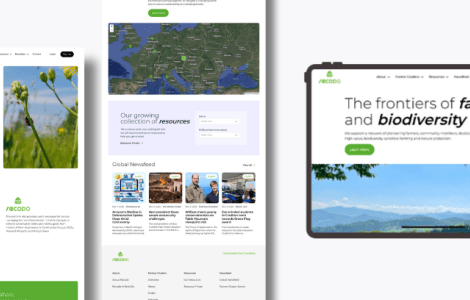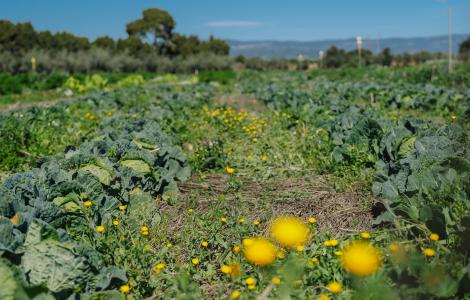Empowerment of women will improve our ability to cope with global change
Ending perceptions of women and other disadvantaged groups simply as victims and instead empowering them as decision-makers in natural resource management are basic steps to deal with ecological crises more effectively. A new collection of studies addresses global environmental change from a feminist and interdisciplinary perspective.
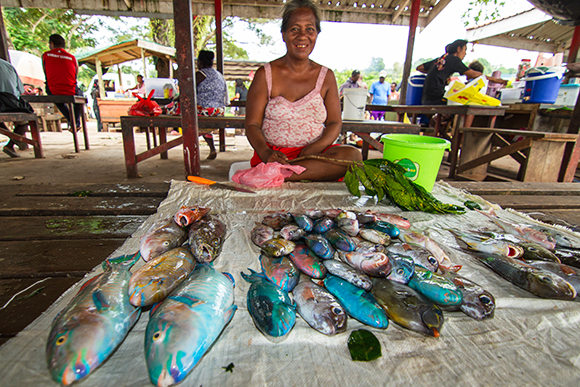
The scientific journal Ambio has just published a special issue which is the first collection of studies relating gender issues and climate and environmental change. The research analyzes how the consequences of these changes and potential responses can be different for people depending on their gender, demonstrating that it is necessary to address power relations, and to have the same opportunities and rights within communities. “In order for human societies to be able to better adapt to global environmental change, it is important to tackle these differences and empower women and other disadvantaged groups in their communities,” says Federica Ravera, researcher at CREAF and the Institute of Mediterranean Agronomic and Environmental Sciences (ICAAM) in Portugal, and lead coordinator of the special issue.
The authors of the publication also highlight that the ability to recover, adapt, or innovate in response to environmental changes is distinct for different social groups; it is important to consider the interaction of gender with other types of discrimination including that based on age, social or economic position, ethnicity, education, sexuality, or (dis)abilities. “This way, we can detect and understand the cases of highly-disadvantaged people and communities and transform our perspective of them, from victims to agents of change. Also, when these factors are considered together, current policies which often suffer from being overly general and simple can be reevaluated and new ones can be developed to be more effective and inclusive,” says Ravera.
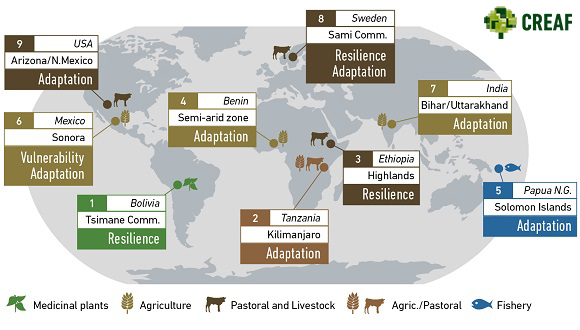
A collection of nine international case studies of different societies and ecosystems
The publication was co-coordinated by CREAF, the Autonomous University of Madrid (UAM), the Basque Centre for Climate Change (BC3) in the Basque Country, and the Leuphana University of Lüneburg, in Germany.
It includes two synthesis editorials, two theoretical articles, and nine case studies. The case studies consider different societies and ecosystems: from ranchers in the United States to the indigenous Sami and their reindeer management in Sweden; pastoral and agricultural communities in Africa; the use and knowledge of medicinal plants in indigenous communities of the Amazon; a study of crop diversity agricultural varieties in India; fishermen in the Salomon Islands.
In the nine case studies, vulnerability to some type of environmental change was evaluated, as well as the ability to recover or adapt, all depending on the context. The work shows the capacity for responding to these environmental changes is increased when greater equality is achieved in the division of labor and roles of individuals within each community, responsibility in decision-making, power relations in management of natural resources, and access to resources and knowledge.
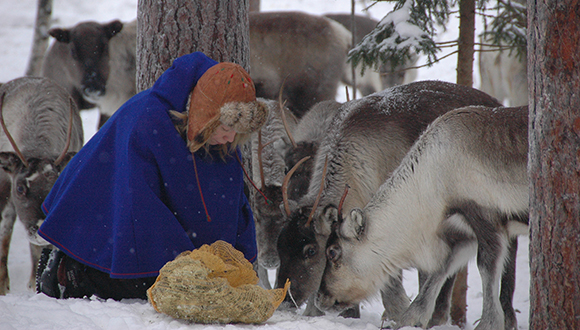
The case studies bring us on a voyage through North America, Sweden, Africa, Asia, and the Solomon Islands
There are communities such as the indigenous Sami who maintain herds of reindeer in Sweden or ranchers in the southern United States where women play an invisible but fundamental role. In addition, to being responsible for some tasks of managing the animals, both studies highlight that these women are responsible for transmitting information within the group and between generations, something which is crucial for their survival. In these communities generating more opportunities for Sami men to achieve higher education and employment options and encouraging Sami women to participate in the formation and implementation of legislation, policies and plans would enhance their adaptive capacity.

Another study carried out in communities of the Ethiopian highlands highlighted the fact that women there typically have less access to local institutions and decision-making in the communities– something which can impact responses to environmental crises. In these groups, management of communal pastureland is restricted for women, and during droughts they are mainly managed for livestock to be sold. Women, on the other hand, apply long-term strategies and prioritize feeding of milk cows and sheeps in order to have food for children and calves.
The publication also includes a study led by the Institute for Environmental Science and Technology at the Autonomous University of Barcelona (ICTA-UAB) which demonstrated that women of the Tsimane Amazonian society have the widest knowledge about wild plants useful for treating illnesses. However, it was also found that each gender is accustomed to choosing different plants for treating the same illness, which suggests that if this knowledge were combined the Tsimane would be much more capable of recovering from or adapting to changes in Amazonia.
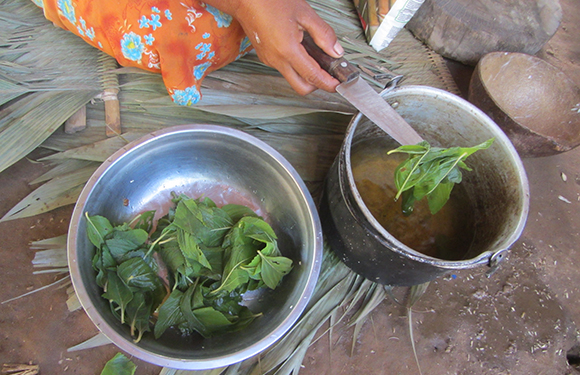
Gender is not the only explanation for inequality and responses to changes
The study led by Federica Ravera in India provides one of the key messages of the special issue. There, the researchers saw that factors other than gender, including caste, education, social class and access to land are crucial for mitigating and adapting to environmental change. In communities of the Himalayans, only women with the greatest access to land and best education are capable of conserving agricultural diversity and responding to environmental changes. These abilities are reinforced when the women maintain control in decision-making and agricultural activities, uniting their labor collectively and maintaining social exchange networks. Likewise, in the plains of the Ganges, only the women of the highest castes have access to agro-ecological innovation, while most others are relegated to grunt work in the fields, replacing the labor of emigrated men.
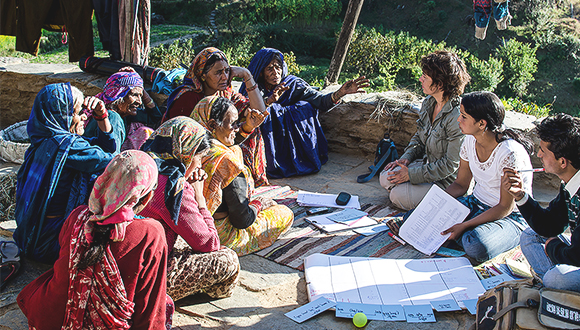
A new interdisciplinary, feminist approach to socio-ecological research
“This is the first time that a group of studies has applied a feminist approach to the study of global environmental change,” says Ravera. This work required opening the scope of research to multiple disciplines, methods, and techniques of both the natural and social sciences. The whole process included the participation ecologists, sociologists, economists, anthropologists, ethnobotanists, and political scientists - the majority of them women.
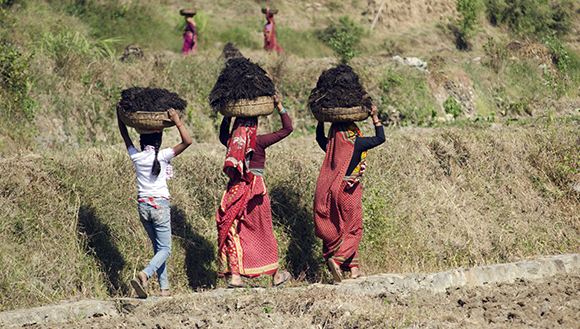
“The willingness to work in this manner, as well as its apparent necessity, shows that there has been a paradigm change in contemporary socio-ecological research. Historically, the effects of environmental changes and ecological crises in forests, crops, or fisheries have been approached from only one of these dimensions. Now, in order to improve adaptive capacities and ecosystem recovery, we need to include the associated social dynamics,” says Federica Ravera.
SPECIAL ISSUE
Ravera, F., Iniesta-Arandia, I., Martín-López, B., Pascual, U., Bose, P. (ed.) (2016). Special Issue: Gender perspectives in resilience, vulnerability and adaptation to global environmental change. Ambio, Volume 45, Issue 3 Supplement. ISSN: 0044-7447 (Print) 1654-7209 (Online).



